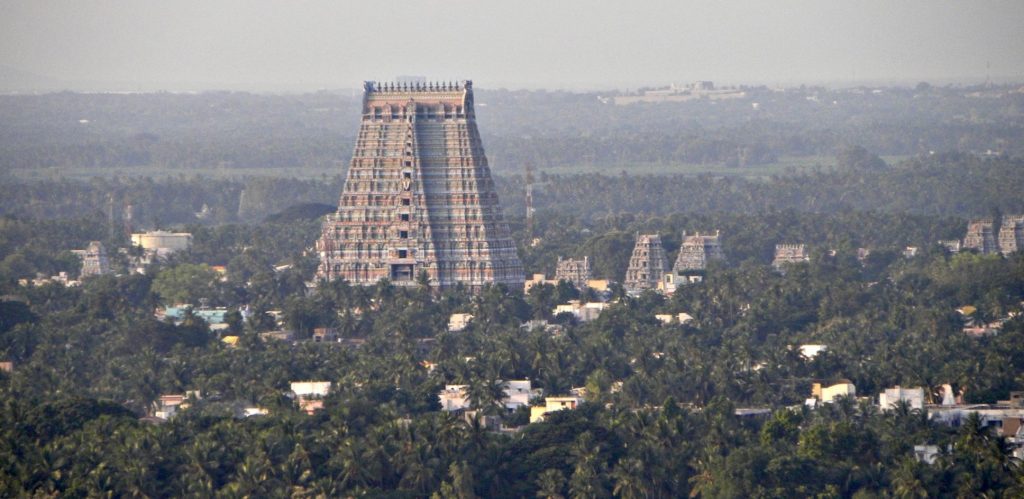Sri Ranganathaswamy temple, also known as Srirangam Temple, is a grand temple dedicated to Lord Vishnu. Located on the Srirangam Island in Tiruchirapalli, Srirangam Temple is considered to be the greatest functioning temple of the world. It is also the largest Hindu temple of India and is counted amongst the biggest religious complexes in the world.
Bound by Cauvery and its tributary Kollidam, Srirangam Temple is devoted to Lord Ranganatha. He is considered as the reclining form of Lord Vishnu. It is the first one of the 108 Divya Desams of Vishnu Ji and that makes it one of the most important Vaishnavite Temple of India and the world.
Now, a little bit about the history of Sri Ranganathaswamy Temple.
Srirangam Temple History
There are two angles of Srirangam Temple History – One is based on mythology while the other is based on the inscriptions on the walls of the temple.”
- Mythological Story:
According to Sriranga Mahathmiyam, when Lord Brahma was performing Samudra Manthan, Srirangam Vimanam emerged from the ocean. It was later brought from Satyaloka to Ayodhya after ages by King Ikshvaku. Then, after Lord Rama killed the evil Ravana, he gave it to Lord Vibhishana after he expressed his wish to be with Rama. On his way to Lanka, he passed through Trichy. He was unable to move the Srirangam Vimanam from the island, so he gave it to Dharma Varma, the local king. There was one condition- the king had to consecrate the Vimanam towards the south cardinal direction, blessing him and Lanka eternally.
- Based on Inscriptions:
Some historical pieces of evidence prove that the origin of the temple in the 1st Century during the Sangam Period. The inscriptions, ranging from 9th to 16th centuries, belong to early Cholas, Pallavas, Hoysala and Vijaynagar dynasties.
In 1311, Alaudin Khilji’s general Malik Kafur invaded the area, destroyed the temple and took the golden idol of the deity to Delhi. Legend has it that the devotees of the deity went to Delhi, sang and danced in front of Khilji to impress him. An impressed Khilji then returned the idol to the devotees.
The Srirangam temple was again invaded; the idols of Vishnu and Laxmi were taken to separate locations. Almost 13,000 devotees of Sri Vaishnav died in the battle of defending this temple. The Srirangam temple is influenced by a number of dynasties and rulers who ruled the region over the course of time.
The Sri Ranganathaswamy Temple is spread over an area of 155 acres and is an architectural grandeur. This magnificent temple houses about 50 shrines and boasts of 21 gopurams, 7 parikramas, 9 sacred pools, and several mandapams. Srirangam temple is more of a temple-town rather than just a temple.

